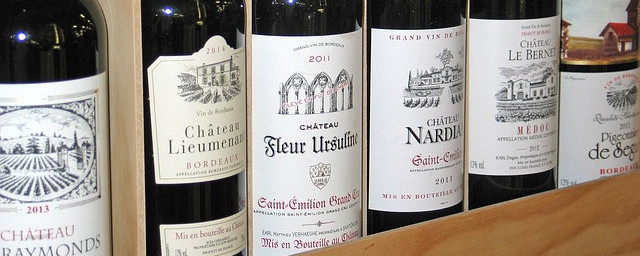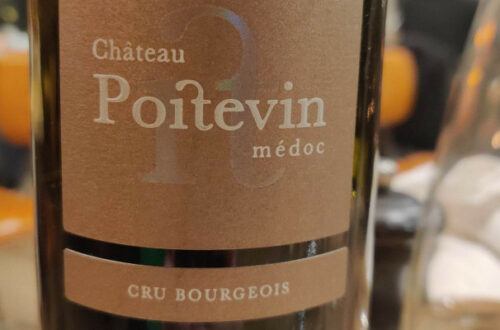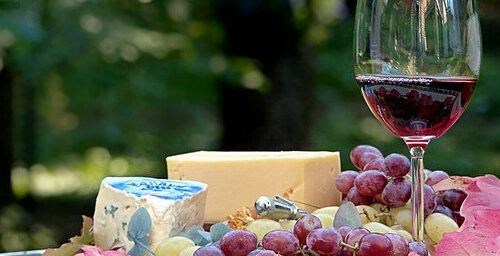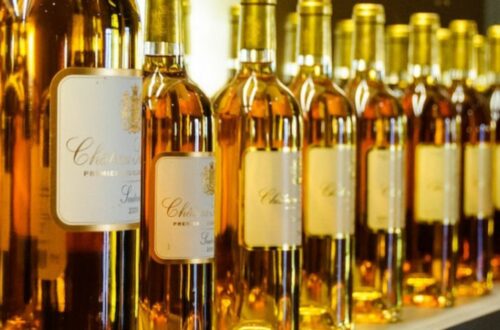
Is Médoc Left or Right Bank? What does it mean?
Médoc is a name we often hear and the wine region is home to the most prestigious wineries in the world. However, if we are not familiar with the Bordeaux wine region, we can get a bit lost when we hear the words “Left Bank” and “Right Bank” in the same sentence…
Let me try to clear that up for you: Is Médoc Left or Right Bank and what does it mean?
What does Left or Right Bank mean?
The Bordeaux vineyards are divided into THREE main areas: the west of the Gironde, the Entre-Deux-Mers, which extends between the Dordogne and the Garonne and the north and east of the Gironde and Dordogne. The first form the LEFT BANK and the last the RIGHT BANK.

The Left Bank is mostly know for its red wines and sweet white wines (Sauternes and Barsac). The soil is mostly gravel on the Left Bank. These kinds of soils tend to absorb the heat so the preferred grape variety will be the late-ripening Cabernet Sauvignon.
Bordeaux wines being mostly blends, the red Left Bank Bordeaux wines are usually Cabernet Sauvignon – dominated wines. This means these wines are full-bodied with black fruits, spices and earthy flavors. It has high tannins.
The Right Bank is mostly known for its red wines. The soils being more limestone and clay, which are draining but cold soils, the early-ripening grape variety Merlot is preferred. So the red Right Bank Bordeaux wines are usually Merlot-dominated blends. These wines are still full-bodied but with a little fewer tannins and more red fruits flavors.
Is Médoc Left or Right Bank?
As you can see just above, Médoc is on the Left Bank.
Be careful, Médoc means TWO things : it’s a wine region and an appellation. However, the appellation is included in the wine region but not equal to the wine region.
Indeed, the Médoc area (or wine region, so I mean geographically) is divided into three areas : Les Landes, Bas Médoc and Haut-Médoc (now this one you may recognize as it is home to the most prestigious Châteaux).
The Landes is at the top of the peninsula and there are no vines actually there. It’s mostly covered by pines, which protects the vines from the Bas and Haut Médoc from the cold winds from the Atlantic ocean.
Bas Médoc lies at the south of Les Landes and used to be known as “La Petite Hollande” (Little Holland) due to the Dutch influence. We now call it Médoc when we’re talking about the AOC, hence the confusion.
Haut-Médoc lies at the south of Bas Médoc and is home to the most prestigious appellations such as Saint-Estèphe, Pauillac, Saint-Julien and Margaux. There is more fine wine per acre produced in Haut-Médoc than anywhere in the world.
So all in all, Médoc is a large geographical area, which contains Les Landes, Bas Médoc and Haut-Médoc AND an AOC, much smaller geographical area but is still one of the largest AOC.
But, to come back to the subject : both are on the Left Bank anyway.
Médoc is on the Left Bank : what does it mean?
Knowing Médoc is on the Left Bank gives you some idea of how the wine will taste.
Bordeaux wines are usually a blend of Cabernet Sauvignon, Merlot, Cabernet Franc, Petit Verdot and a splash of Carmenère.
Concerning the Médoc, men (ie the Dutch) are at the origin of the nature of the soils. After they drained the whole place, they put a lot of gravel, which is a mixture of pebbles, sands and clays.
The pebbles are brought by the Garonne and the Dordogne rivers. These soil absorb and transmit heat, which is ideal for late-ripening grape varieties. And especially these soils are ideal for Cabernet Sauvignon! Thus, wines from the Médoc will be Cabernet Sauvignon-dominated blends.
However, the Dutch didn’t put only gravel but also a lot of limestone clay, which, with its draining properties, is ideal for Merlot. This explains why there are nearly half of the vines that are Merlot plantings.
The blends from Médoc are where the percentage of Merlot is the highest in the Cabernet Sauvignon-dominated blends.
AOC Médoc wines will have medium acidity and can be drunk young and will not gain much with bottle aging.
However, Haut-Médoc wines will also have medium acidity with high tannins (due to the Cabernet Sauvignon), high alcohol and complexity. These wines are made for aging. There is also a lot of terroir diversity in the sub-appellation which makes this region quite complex (but in a good way!)
Young wines will present aromas of cassis, blackberry, black cherry, liquorice, vanilla, coffee bean, spices… When aging, these aromas will become tobacco leaf, truffle, cigar, leather, spices, wet soil…
If you want to know more about how a Médoc wine tastes, let me recommend you this post.
Conclusion : Is Médoc Left or Right Bank? What does it mean?
Médoc is on the Left Bank. This gives information about the kind of wine you can be expecting. Médoc wines will usually be a blend of Cabernet Sauvignon and Merlot with the former being the dominant variety. Thus, the wines will present aromas of cassis, blackberry, black cherry, liquorice, vanilla, coffee bean, spices… When aging, these aromas will become tobacco leaf, truffle, cigar, leather, spices, wet soil…







2 Comments
Cody Walker
Thank you for this post! This post is very informative and explained a lot to me about wine! I have not typically been a big win connoisseur mainly because I did not know much about it. Thank you for the information! Wine might be something that I get more into in the future!
Mademoiselle
Thank you Cody for stopping by and leaving a comment. I’m glad my post helped you